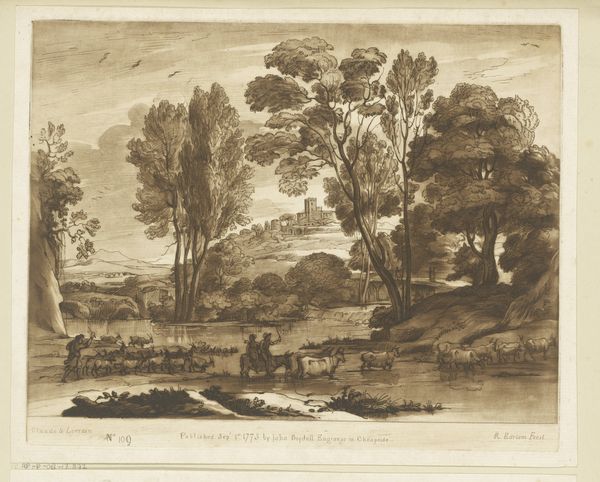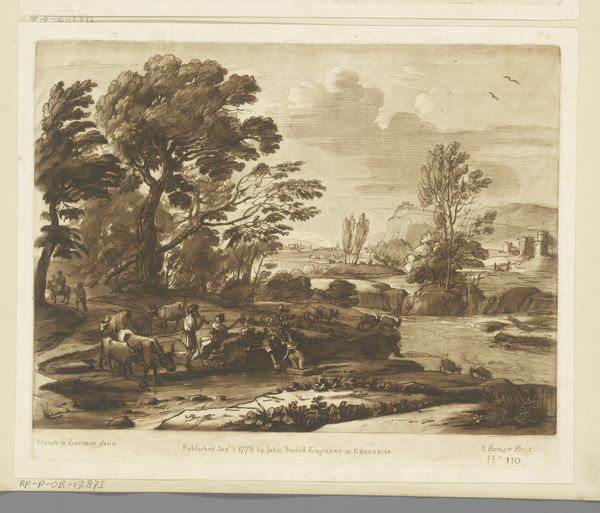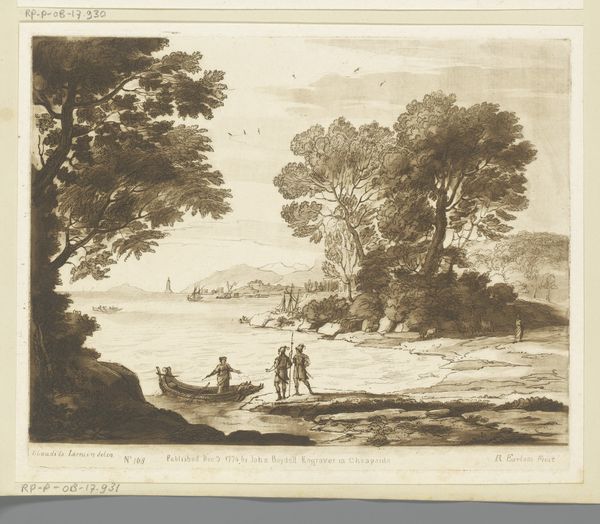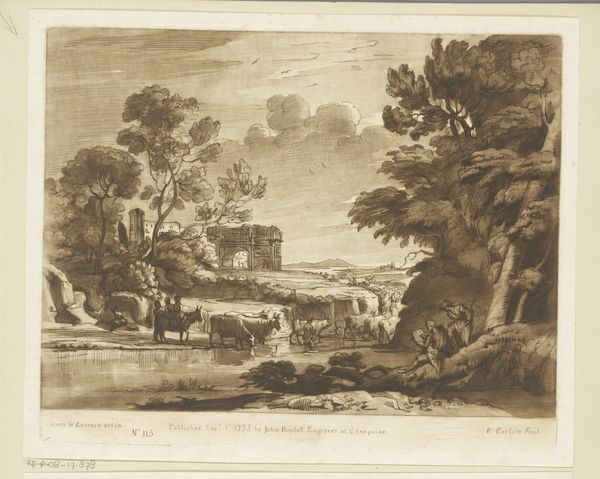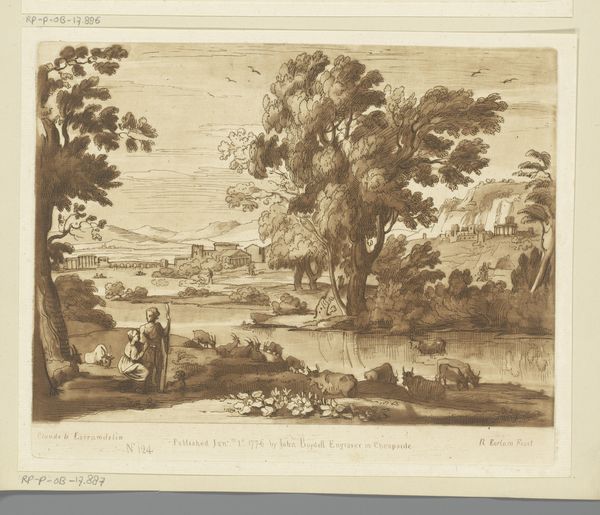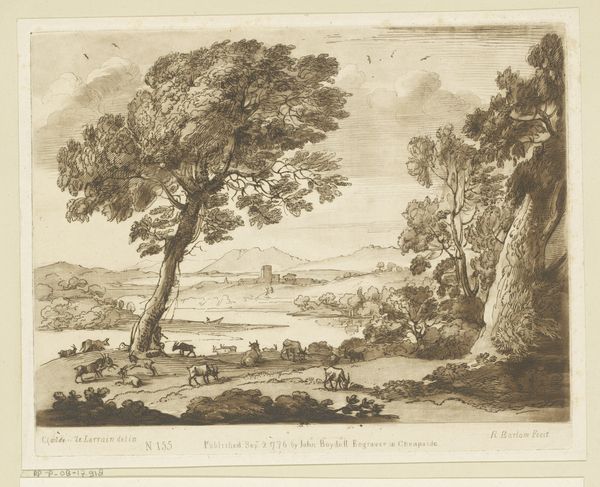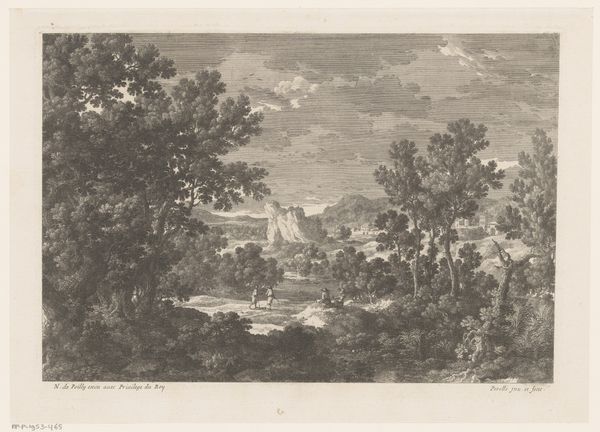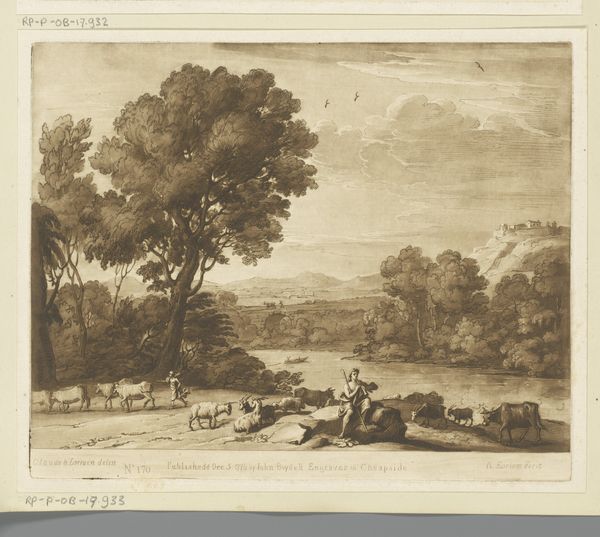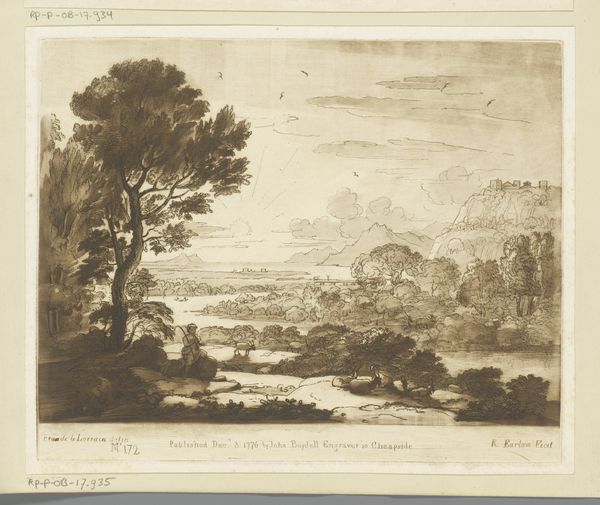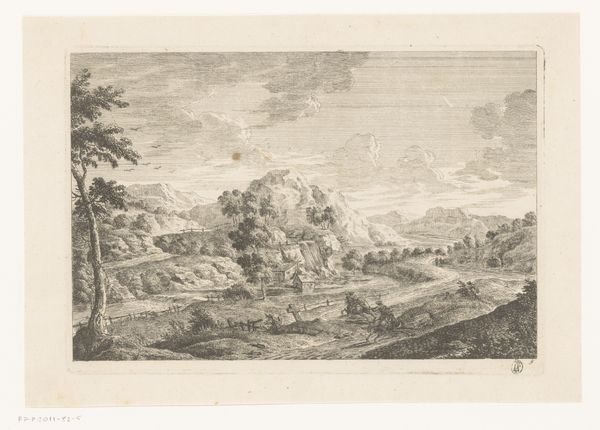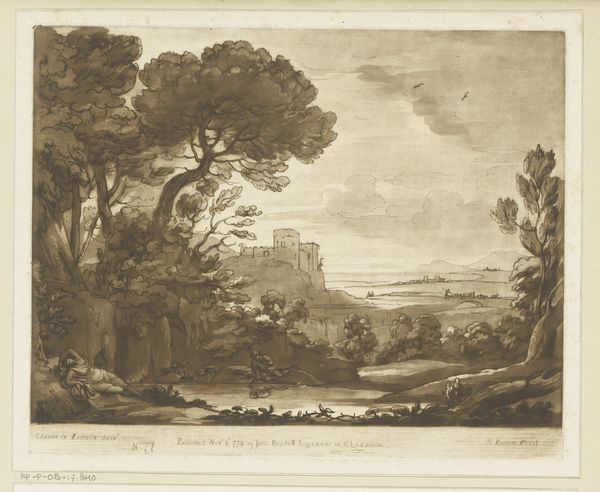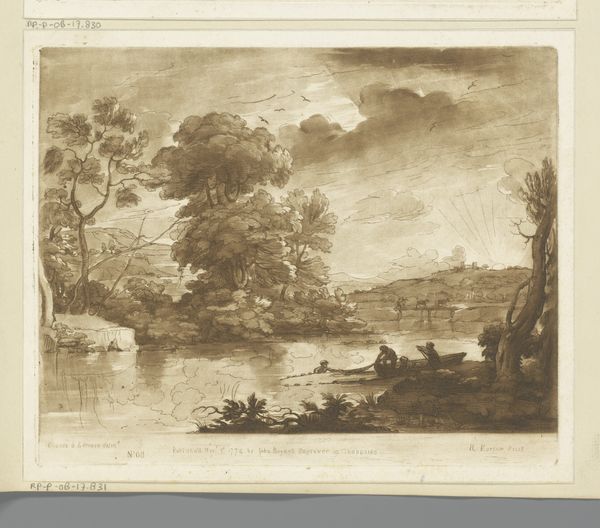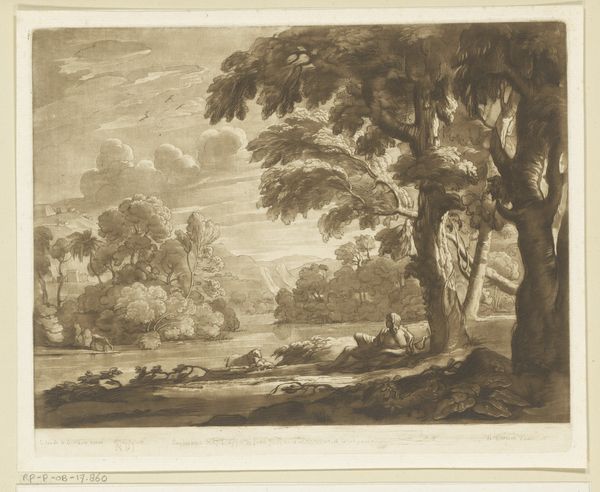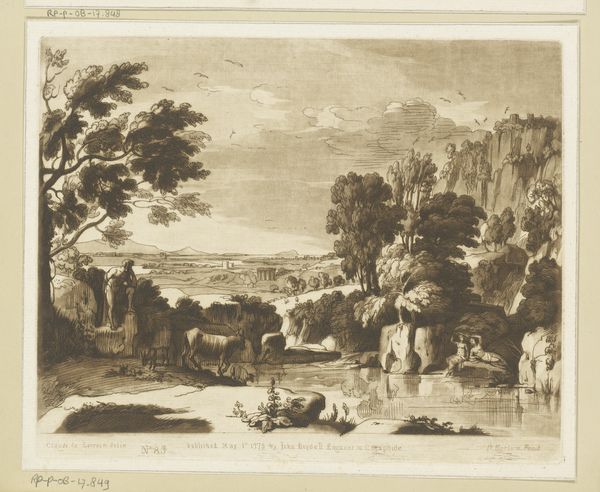
Landschap met engel die Hagar vertelt dat ze terug moet gaan naar Abraham en Sara Possibly 1775 - 1779
0:00
0:00
richardearlom
Rijksmuseum
print, engraving
# print
#
landscape
#
genre-painting
#
history-painting
#
engraving
Dimensions: height 208 mm, width 258 mm
Copyright: Rijks Museum: Open Domain
Editor: Here we have Richard Earlom's engraving, "Landscape with angel telling Hagar to return to Abraham and Sarah," dating to the late 1770s, housed at the Rijksmuseum. What strikes me immediately is how the light seems to emanate from the architecture on the hilltop, drawing the eye upwards. What do you see in this piece from a formalist perspective? Curator: From a purely formal perspective, one is immediately struck by the interplay of light and shadow which serves to guide the viewer's eye through the composition. The artist has used the brown ink to create depth, using varying tonalities, strategically placed to delineate form and create atmospheric perspective. The foreground figures, rendered in darker shades, act as anchors, juxtaposed against the lighter, almost ethereal rendering of the distant buildings. How do you think this contrast in shading impacts our perception of depth? Editor: It's interesting you point that out. I suppose the use of darker tones closer to the viewer tricks the eye into perceiving depth by exaggerating the foreground against the more faded background. Do you notice anything about the artist’s line work in conveying texture or emotion? Curator: The engraver's skill is undeniable. Observe the intricate network of lines which capture the rough texture of the trees, contrasting with the smooth surfaces of the distant architecture. It seems that the contrast creates an underlying tension: we observe that linear precision, strategically employed, contributes to the narrative suggested in the landscape. Ultimately, it transcends mere representation, and is elevated through meticulous attention to form, tone and line. Editor: That's fascinating, focusing on the pure composition has really opened my eyes to the artistic choices made here. Curator: Indeed, by dissecting the visual elements, we discover the artist’s mastery and elevate our appreciation for the art itself, quite apart from any other contextual understanding.
Comments
No comments
Be the first to comment and join the conversation on the ultimate creative platform.
